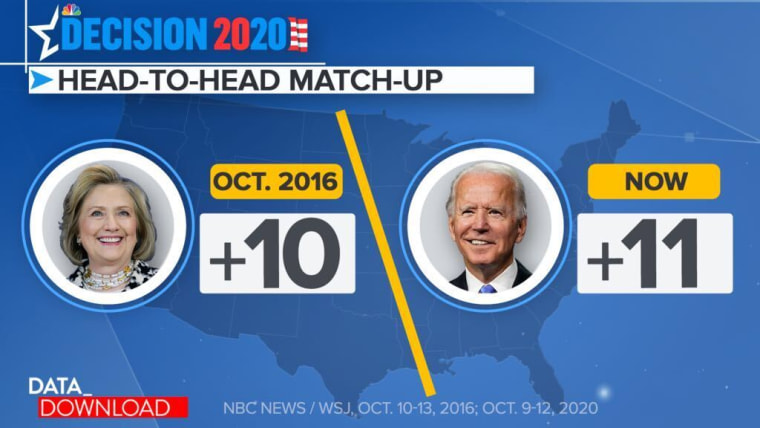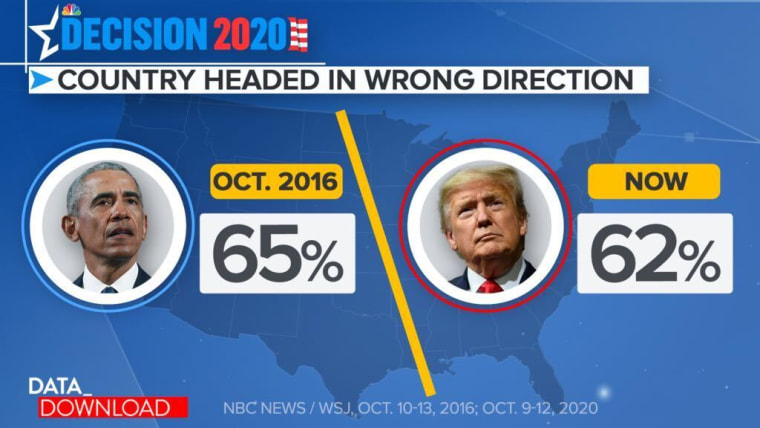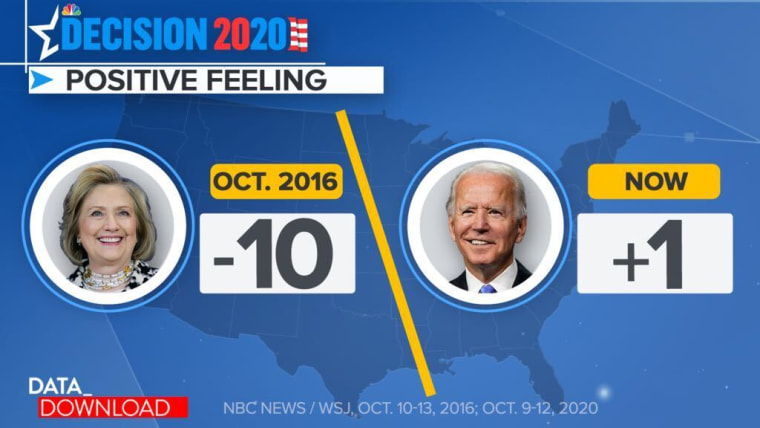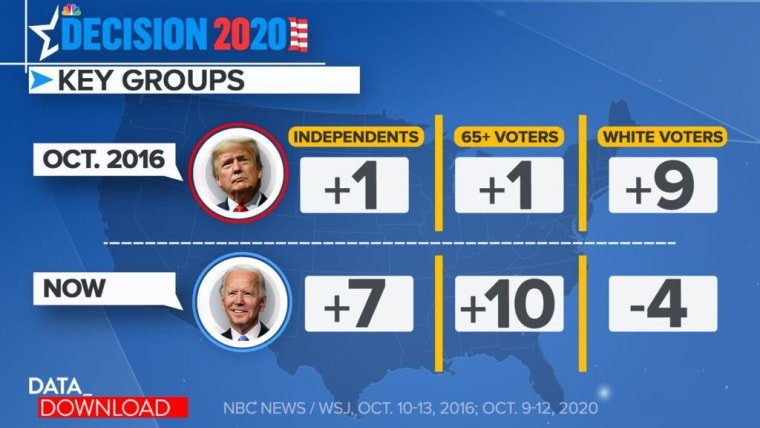WASHINGTON — For many political junkies and analysts, the 2020 presidential campaign feels eerily familiar. The national polls show the Democrat has a big lead Dante Chinni reported for NBC news. There are some usually Republican states that seem to be in play. And the Trump campaign is relying heavily on a base-focus strategy.
It’s all very 2016 and it has Trump and Biden supporters wondering in the final tally in November could look similar as well.
The similarities to four years ago are impossible to ignore, but a closer look at the poll numbers shows 2020 holds some important differences, beyond the COVID-19 pandemic and a high unemployment rate.
Let’s start with the big similarity that also holds a big difference. This week’s NBC News/Wall Street Journal poll showed Joe Biden ahead of President Donald Trump by 11 points among registered voters. In 2016, a poll conducted on almost the exact same days showed Hillary Clinton ahead of Trump by 10 points among registered voters.

But there is a big difference in those two polls. Biden is over 50 percent in this week’s poll, (53 percent to be precise), while Clinton was at 47 percent in 2016. That means that, as of this week, Biden is in a much stronger position than Clinton was.
Even if Trump gathered up all the other non-Biden votes, he would only be at 47 percent. That would be one-point better than the 46 percent he actually got in the final 2016 tally. At 53 percent, Biden is already five points higher than the 48 percent Clinton received in the final 2016 tally.
There is another similarity that actually works out to be a big difference, the number of people who believe the country is “off on the wrong track.” In the latest poll, that number, 62 percent, is very close to where it was in 2016, 65 percent.

Why is that similarity a difference? Because a high wrong-track number tends to be thought of as a problem for the incumbent party. A full 62 percent feeling bad about where the country is headed means people may be more likely to be looking for a change in leadership. In 2016, Trump was the change agent. In 2020, he’s the man in power. Incumbency has its privileges, but it also has its problems.
The other differences between 2016 and 2020 are a bit more Biden-specific.
First off there are the feelings people have about the Democratic nominee. He is in positive territory with voters, while Clinton was not.

Among all registered voters, 43 percent say they have positive feelings toward Biden, while 42 percent say they have negative feelings, that’s a net positive of one. That may not sound like much, but at this point in 2016, Clinton’s “feeling thermometer” was a net negative of 10. Her numbers were 40 percent positive versus 50 percent negative.
And for comparison, President Trump’s rating is current feeling rating is a 42 percent positive and 53 percent negative – a net negative 11.
The numbers also look different among some very important voter groups: independent voters, 65-and-older voters and white voters. Biden is doing better against Trump than Clinton did in 2016.

Among Independent voters, always an important part of the electorate in a time when Democrats and Republicans tend to vote along hyper-partisan lines, Biden holds a seven-percentage point lead over Trump. Four years ago, Trump narrowly led with independents by one point.
